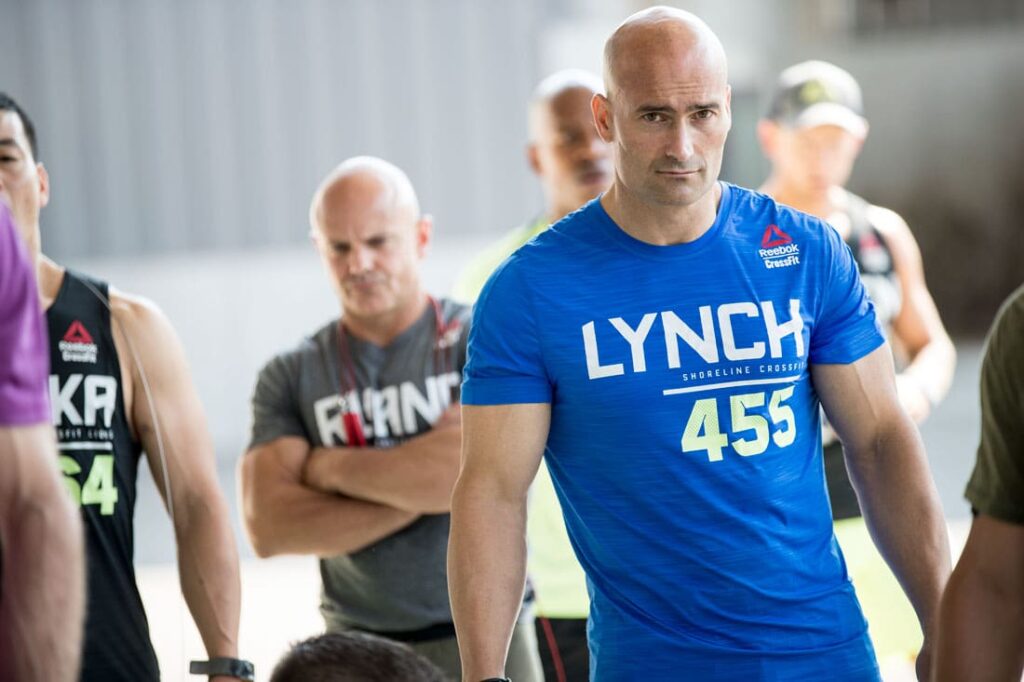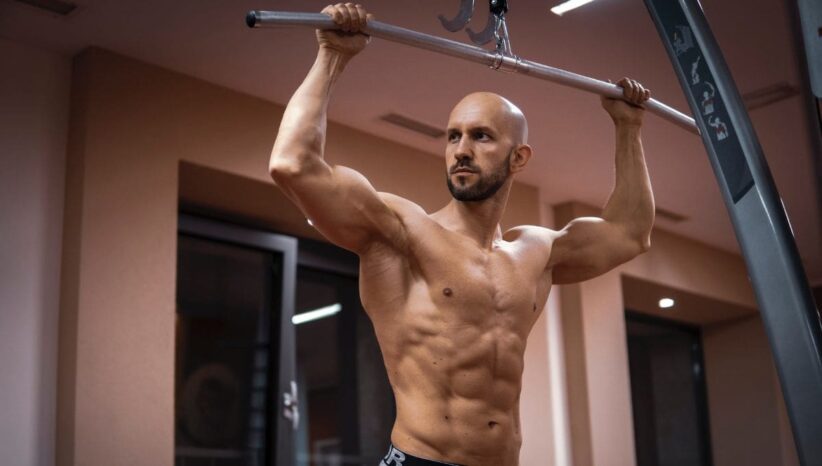Are you over 40 years old, but still happy with training hard every regularly to build muscle and keep fit and athletic? Then check out these 7 best back exercises with you in mind.
The lat muscles, short for latissimus dorsi, play a crucial role in shaping the aesthetics of your physique. When well-developed, these muscles create a visually impactful look, particularly because they occupy a significant portion of the back surface area. The lats contribute to the coveted V-taper, adding width to your frame and creating the illusion of a smaller waist. If your goal is to achieve an attention-commanding physique, building bigger lats is a must.
The 7 best back exercises for men over 40 were sorted out by coach Alain Gonzalez, an author, personal trainer and YouTuber with over 800K subscribers. He often uploads videos of fitness workouts, tips, training tricks and more, all related to making the most out of your time when working out.
Check it out below.
 Source: Courtesy of CrossFit Inc.
Source: Courtesy of CrossFit Inc.The Only 5 Exercises You Need to Look Jacked (for Men Over 40)
7 Best Back Exercises for Men Over 40
Understanding the basic anatomy of the lat muscles is essential for effective training. The muscle fibers of the lats run diagonally in an upward and outward direction, originating from the final thoracic spine down to the iliac crest and inserting at the intra-tubercular groove of the humerus. The primary functions of the lats include extension and abduction of the arm, but they also play a role in internal rotation of the shoulder and lateral flexion of the spine.
While the lats consist of three regions (thoracic, lumbar, and pelvic), complete isolation of these regions is challenging. However, incorporating both horizontal and vertical pulling movements into your training routine ensures overall development of the lat musculature.
To maximize the effectiveness of any lat-based exercise, focus on pulling your upper arm down toward the body rather than pulling back. This emphasizes shoulder extension, the main function of the lats, and minimizes scapular movement, preventing the recruitment of other back muscles.
Now, let’s delve into the seven best back exercises for achieving wider lats:
- Lat Pull Downs or Pull-Ups: Pull-ups or pull downs are fundamental exercises for targeting the middle and inferior divisions of the lats. Use a medium to wide grip to train adduction effectively, and aim for the bar to reach face level while driving your elbows towards your hips.
- Underhand Barbell Row: This row variation with an underhand grip externally rotates the shoulder, providing a stretch on the lats. Keeping your elbows closer to your body emphasizes the lats even more.
- Close Grip Chest Supported Row: This variation minimizes core engagement, allowing more tension on the lats. Focus on shoulder extension within the range of 25 to 55 degrees to optimize lat activation.
- One Arm Sagittal Plane Pull Down: This uncommon variation follows the diagonal fiber orientation of the lats. Ensure the handle is slightly above your head, and drive the elbow down to the hips for effective extension.
- T-Bar Row: T-bar rows force the weight to move in a fixed arc, overloading the stretch position of the lats. Keep your torso close to parallel to the floor for optimal lat engagement.
- Meadows Row: This row variation, popularized by John Meadows, optimizes the range of motion for the lats. Load the bar with smaller plates to allow a greater range of motion, focusing on keeping the elbows close to the torso.
- Swimmer Row: Similar to a pull-up, this exercise targets the lats in their length and range. Using a rope removes biceps assistance and allows for a deeper degree of shoulder extension, enhancing the stretch on the lats.
In conclusion, achieving wider and more defined lats is a key component of building an aesthetically pleasing physique that commands attention. The seven back exercises outlined provide a diverse range of options for targeting the lat muscles from various angles and movement patterns. However, it’s important to approach your training with a strategic mindset rather than attempting to incorporate all these exercises simultaneously.
Instead, consider selecting a few exercises from the list that resonate with your preferences and suit your individual biomechanics. Rotate through these exercises in your training routine to ensure well-rounded development of the entire lat musculature. This approach not only prevents monotony but also allows for progressive overload and adaptation.

Top 3 Workout Splits for Muscle Growth (Men Over 40)
Remember, the quality of your movements is paramount. Focus on the mind-muscle connection, ensuring that you engage your lats throughout each exercise. Pay attention to the recommended tweaks, such as pulling your upper arm down toward the body and emphasizing shoulder extension, to maximize the effectiveness of each repetition.
Furthermore, consistency and patience are crucial in the pursuit of wider lats. Building muscle takes time, and a sustainable, long-term approach to your training will yield the best results. Track your progress, adjust your training intensity as needed, and be mindful of your form to prevent injuries.
Incorporating these effective back exercises into your routine, along with a balanced and well-rounded fitness program, will contribute significantly to the development of those impressive lats. Ultimately, the journey to wider lats is not just about the physical transformation but also about embracing the discipline, dedication, and joy that comes with the pursuit of a well-crafted physique. So, choose your exercises wisely, stay committed, and enjoy the process of sculpting a back that truly stands out.
Watch the video below for more information.
8 Recovery Tips that Build Muscle Faster (Men Over 40)
Training your back into your later years offers numerous benefits that contribute to overall health, functionality, and an enhanced quality of life. Here are several reasons why it’s a good idea to maintain back training as you age:
- Posture and Spinal Health: As you age, maintaining good posture becomes increasingly important. Regular back training helps strengthen the muscles that support the spine, reducing the risk of poor posture and associated issues, such as kyphosis or lordosis. Strong back muscles contribute to a more upright and stable posture.
- Functional Independence: A strong back is crucial for daily activities and functional independence. Whether you’re lifting groceries, reaching for items on high shelves, or performing other routine tasks, a well-trained back ensures that you can navigate these activities with ease and reduced risk of injury.
- Bone Density and Osteoporosis Prevention: Resistance training, including back exercises, has been linked to increased bone density. This is particularly important as you age because it helps prevent conditions like osteoporosis, which makes bones more susceptible to fractures. By placing stress on the bones through resistance training, you stimulate bone growth and maintenance.
- Joint Health: Back exercises contribute to the health of the joints in the spine and surrounding areas. Keeping these joints mobile and well-supported by strong muscles can alleviate stiffness and discomfort often associated with aging. It also reduces the risk of conditions like arthritis.
- Balance and Fall Prevention: The muscles of the back play a significant role in maintaining balance. As you age, the risk of falls increases, and having a strong, stable back can be instrumental in preventing accidents. Back training contributes to improved proprioception and coordination, reducing the likelihood of falls.
- Metabolism and Weight Management: Resistance training, including exercises that target the back, helps maintain and build lean muscle mass. As metabolism tends to slow with age, preserving muscle mass becomes crucial for weight management. Additionally, a higher muscle mass contributes to improved insulin sensitivity.
- Pain Management: Chronic back pain is a common issue as people age. Regular, targeted back exercises can help alleviate and prevent back pain by strengthening the muscles that support the spine. It’s important to focus on exercises that promote flexibility, mobility, and muscle endurance.
- Mental Well-being: Exercise, including back training, has been linked to improved mental health and cognitive function. Staying physically active can help reduce the risk of cognitive decline and contribute to a positive outlook on life.
- Social Interaction: Engaging in regular exercise, whether at a gym, in a group class, or outdoors, provides opportunities for social interaction. Maintaining a social network is crucial for mental and emotional well-being, and shared physical activities can be enjoyable and fulfilling.
In essence, incorporating back training into your later years is a holistic approach to maintaining overall health and vitality. It enhances physical function, supports mental well-being, and contributes to a more active and independent lifestyle as you age. Always consult with healthcare professionals or fitness experts to tailor your exercise routine to your specific needs and conditions.
What Are the Minimum Steps You Should Walk Every Day for Health Benefits (Not 10K)
Image Sources
- Master Athlete Lynch: Courtesy of CrossFit Inc.
- Lat pulldown: Tanja Nikolic on Pexels
